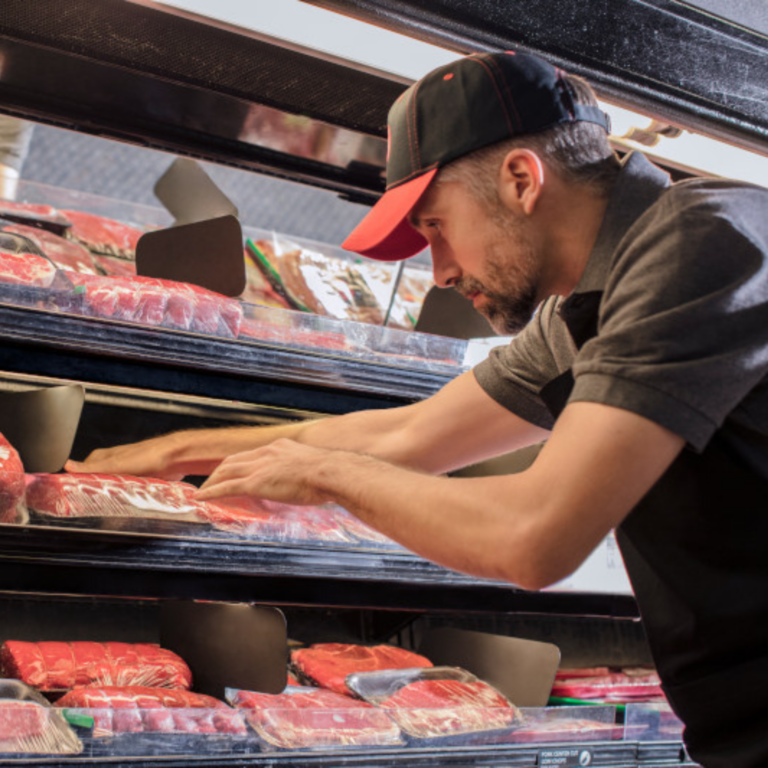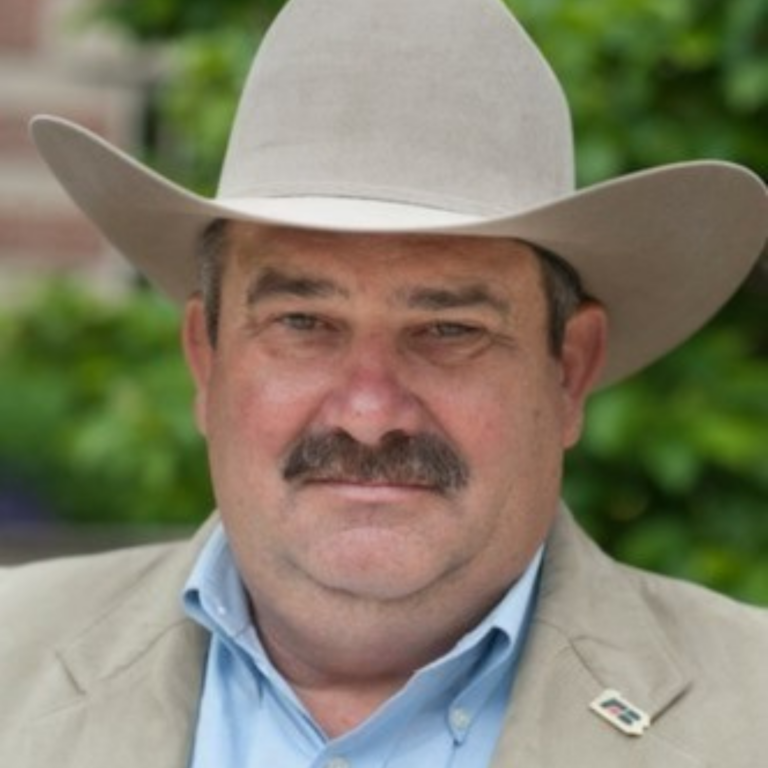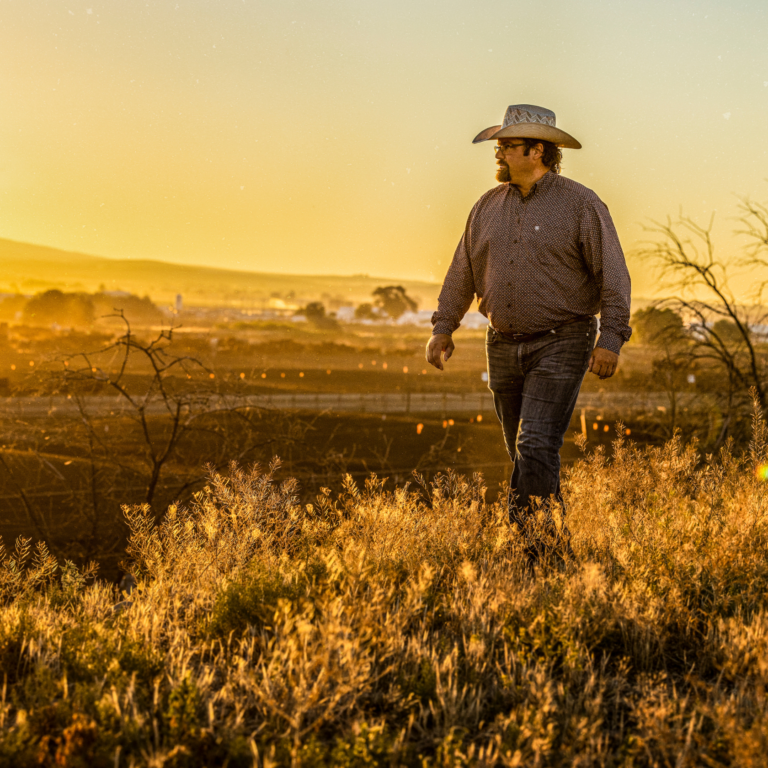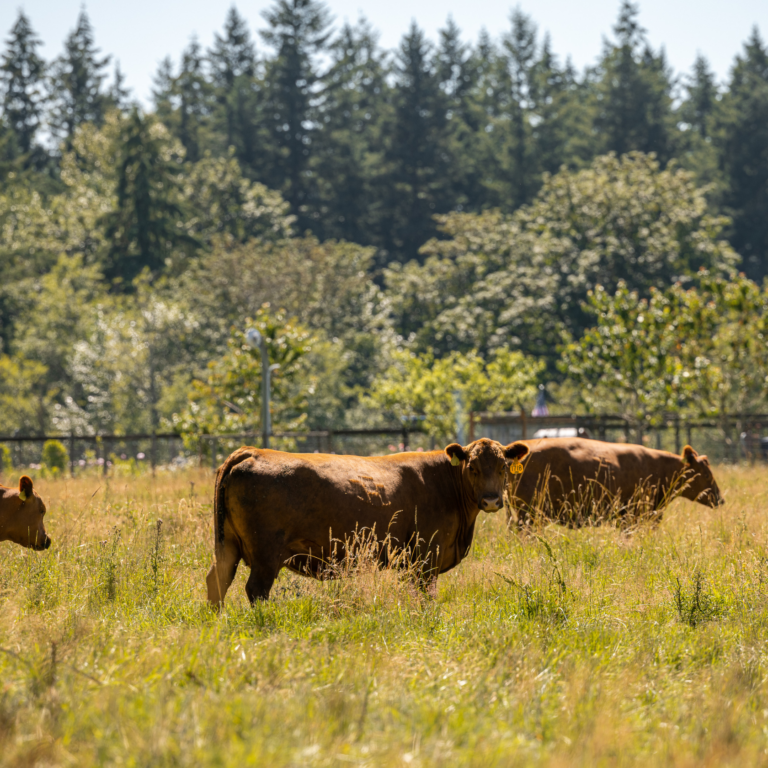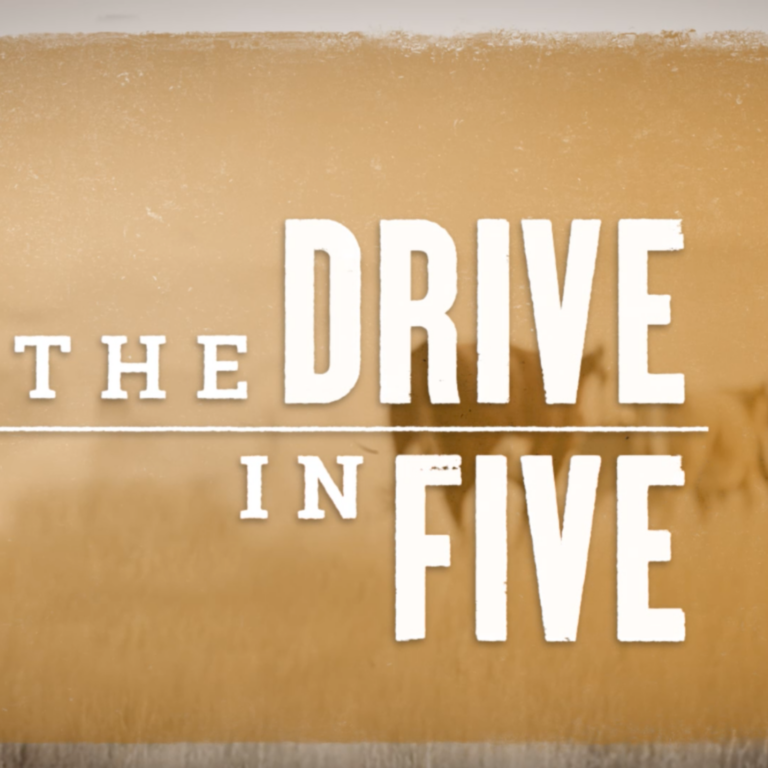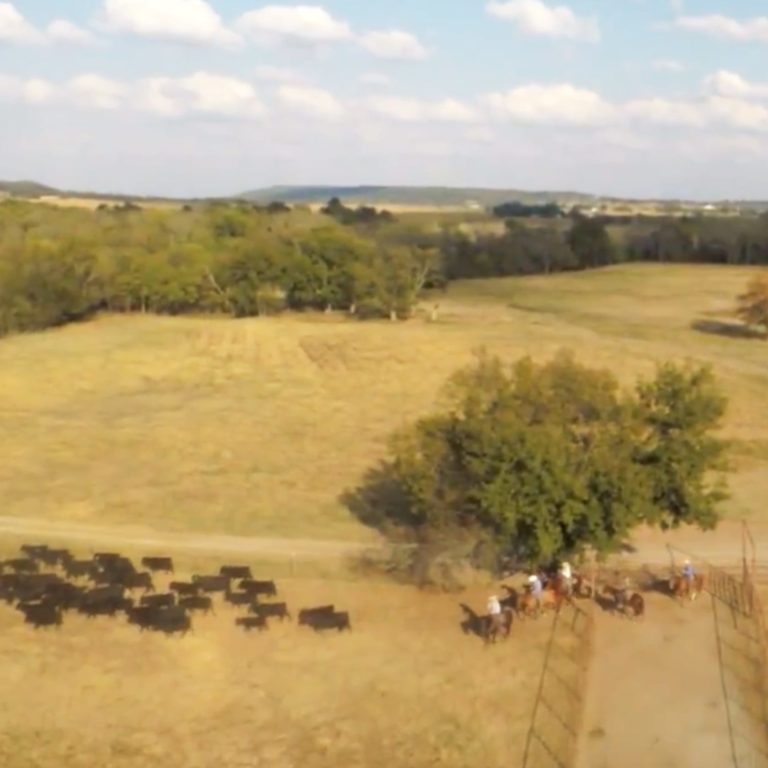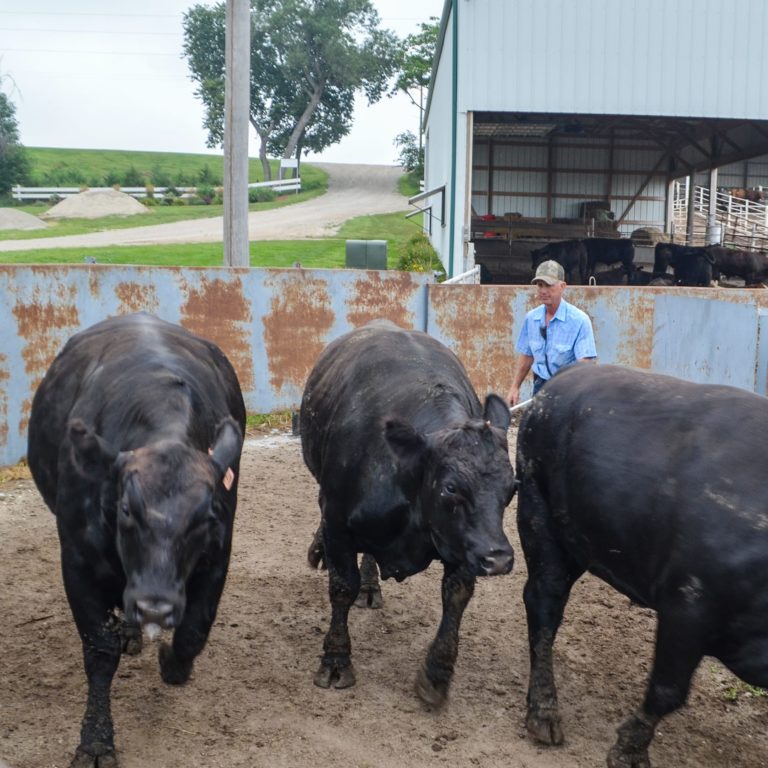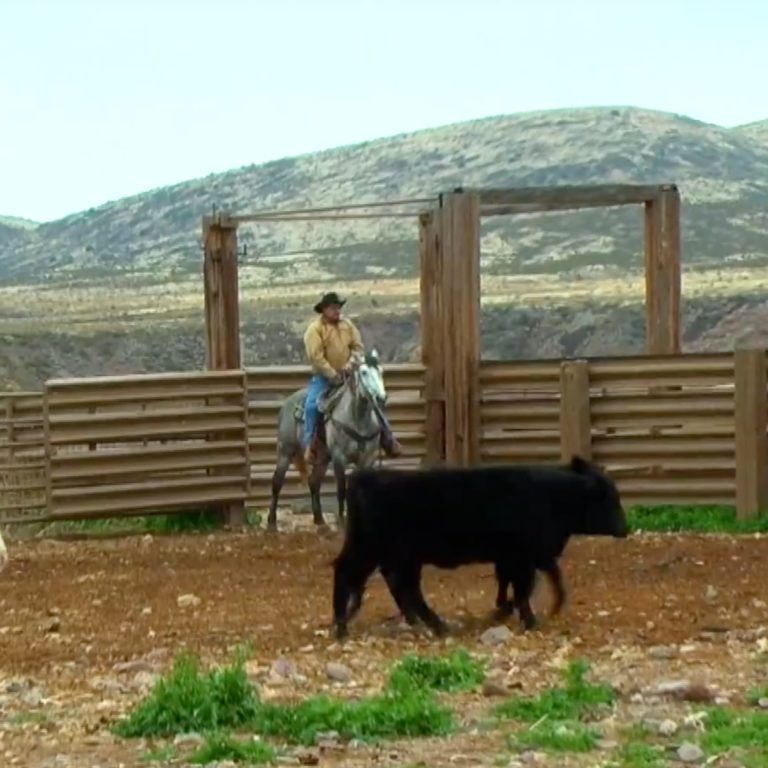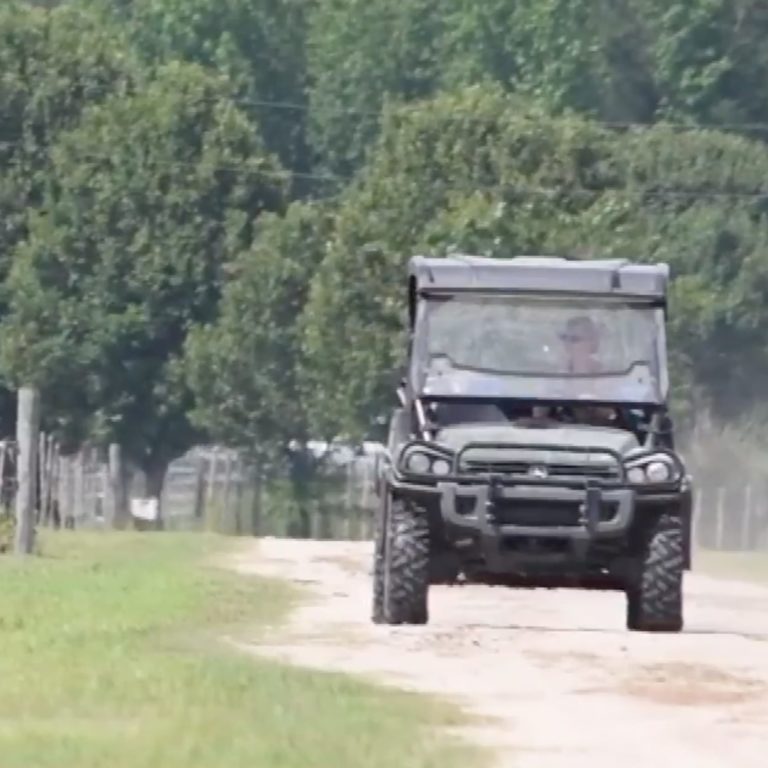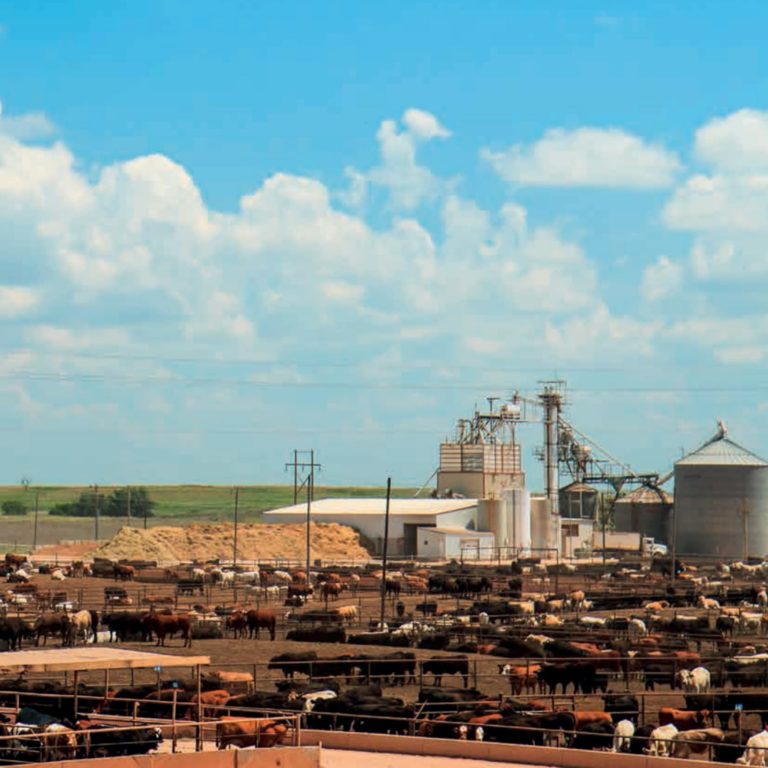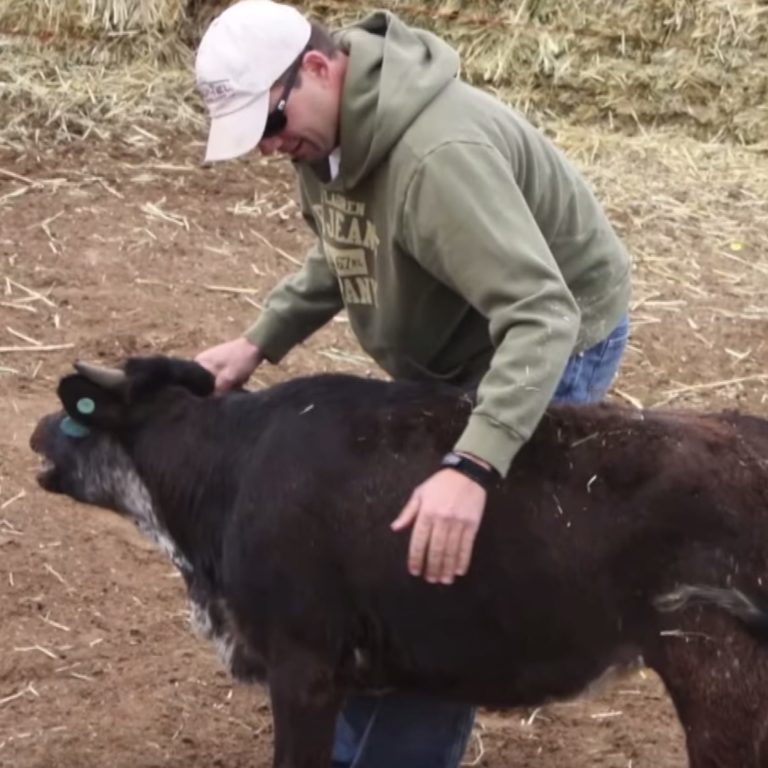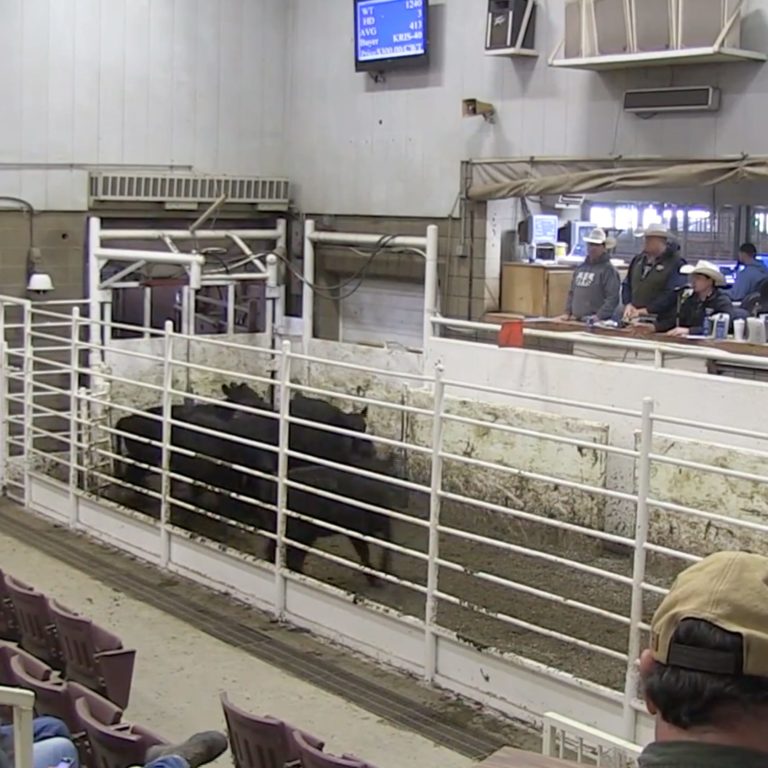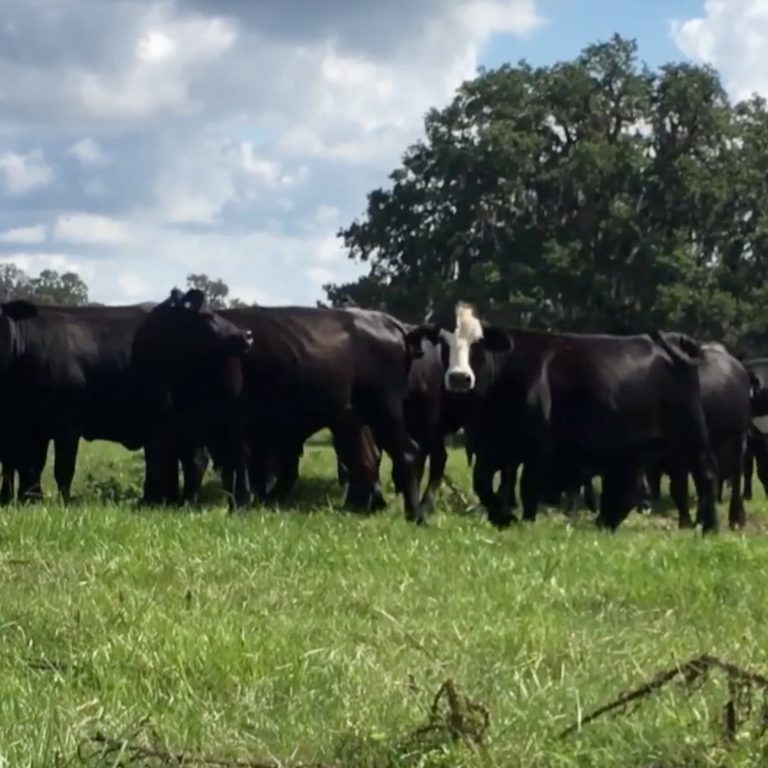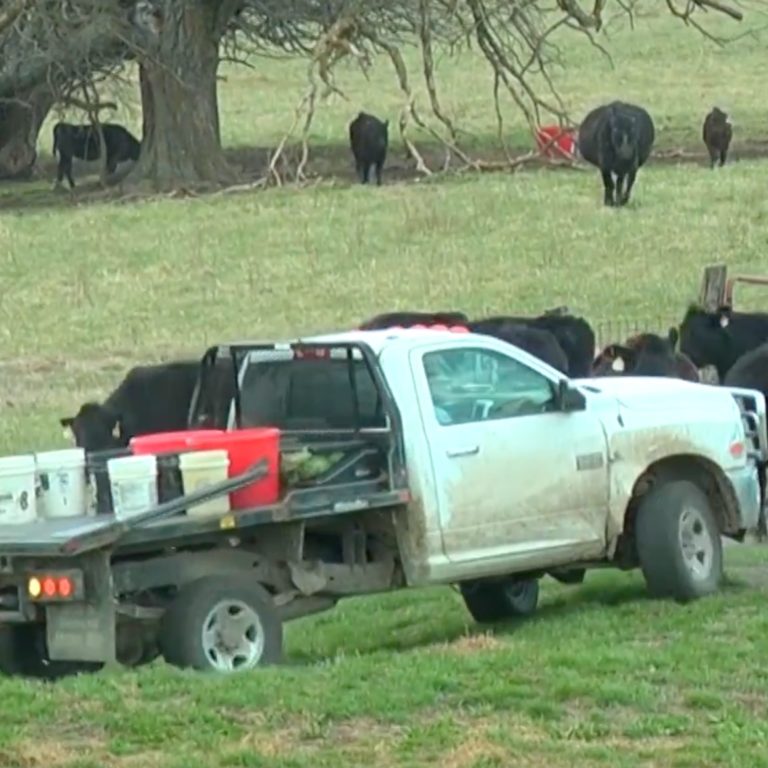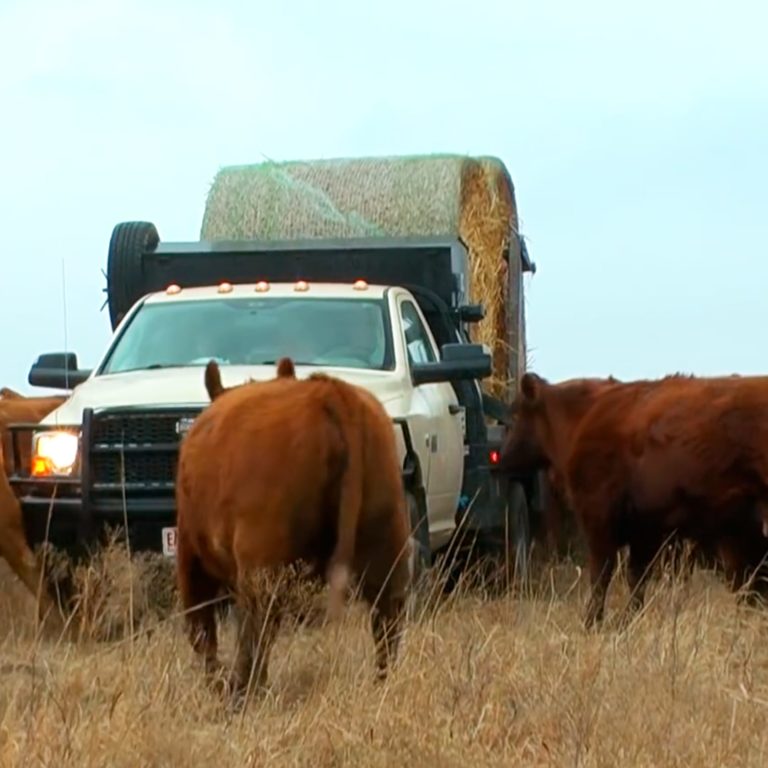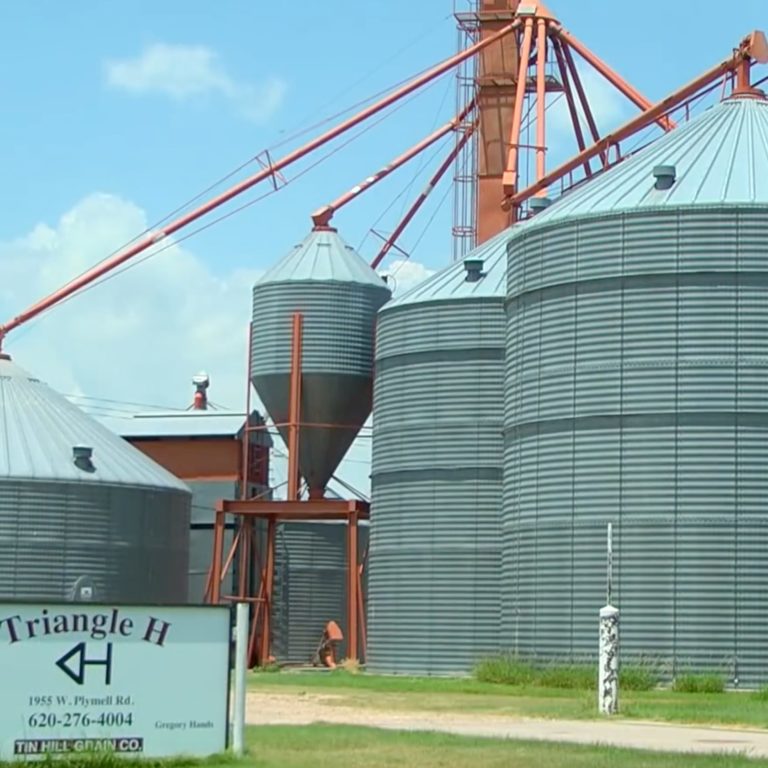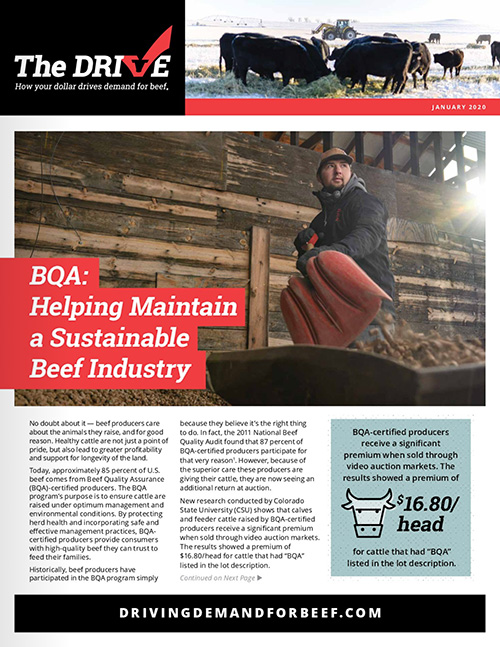Debunking Environmental Claims with Science
The Beef Checkoff tackles concerns regarding beef and the environment with the power of science-backed research. The Beef Sustainability Research program ensures that consumers have access to accurate information. By dismissing and rectifying any false claims, the Beef Checkoff aims to instill consumer confidence about the sustainability of beef production.
This Checkoff-funded program assesses beef sustainability using an approach that balances environmental responsibility, economic opportunity and social diligence across the beef value chain. This research then provides science-validated sustainability indicators that serve as industry benchmarks and provide a path forward to continuous improvement. Encompassing the entire beef industry, from the birth of a calf to beef on the consumer’s plate, this research program is a proactive and innovative scientific approach to creating a sustainable beef product for a growing world population while increasing consumer confidence in beef.
Through its in-depth research, the Beef Checkoff has been able to show that U.S. beef producers are leaders in sustainability and committed to responsibly raised beef. But how does the Beef Checkoff use these facts to help drive beef demand?
This research provides a basis for most Checkoff-funded advertising campaigns and other initiatives. Beef’s sustainability message is then communicated to many audiences, including consumers, nutritionists, registered dietitians, the scientific community, influencers, chefs and communities abroad. Here are only a few of the science-backed facts illustrating how U.S. beef producers are sustainability leaders. To see a repository of Checkoff-funded beef research, visit beefresearch.org.
1. U.S. vs. Global Emission Intensity
The U.S. beef industry’s emission intensity is two to nine times lower than that of top beef-producing countries such as Australia, India and Brazil. Since 1996, the U.S. has had the lowest GHG emission intensity in the world. 1
The emissions intensity of the U.S. Beef Industry is: 2
- Over 2x lower than Argentina
- About 2x lower than Australia
- Nearly 3x lower than Brazil
- Nearly 2x lower than Canada
- About 9x lower than India
2. Cattle: The Ultimate Upcyclers
Every day, cattle graze and turn natural resources like solar energy and pastureland into high-quality proteins and other invaluable products. They’re upcyclers that take otherwise useless materials, add nutritional and environmental value, and transform them into something more.
Approximately 29% of the land in the U.S. is pasture or rangeland that is too wet, rocky, steep, or arid to support cultivated agriculture.3 This land can support cattle for protein upcycling. Learn how cattle upcycle.
3. The Value of Upcycling
- Upcycling adds additional value to products that otherwise would’ve been wasted.
- Byproducts from biofuel and food production industries, such as distillers grains and beet pulp, are digestible by cattle, reducing the volume of waste going to landfills.
- Properly managed cattle grazing can improve rangeland and wildlife habitats.
- As the global population grows, ruminant animals like beef cattle can help us make more food with fewer resources.
- More than 44% of an animal’s live weight is transformed into other goods, such as leather, cosmetics and pet food.
4. More with Less
U.S. farmers and ranchers produce 18% of the world’s beef, with only 6% of the world’s cattle. 4
5. U.S. Improvements in Beef Production
The U.S. beef industry increased the pounds of beef produced per head by 67.58% since 1961 (compared to 20195).
6. Greenhouse Gas Emissions
Beef cattle only represented 2.3% of emissions in the U.S. in 2020. 6
7. Corn Going to Grain-Finished Beef Cattle
- 7% of total corn produced in the U.S. is fed to feedlot cattle. 7
- By comparison, 34.8% of corn acreage in the U.S. is used for producing ethanol. 8
- Corn acreage used to feed feedlot cattle is 0.2% of total U.S. land area, 1.4% of total U.S. cropland acres, and 7% of total U.S. harvested corn acres. 9
- The amount of U.S. land used to produce corn to feed grain-finished cattle is less than the size of the Houston Metro area. 10
- Climate Watch Data. Agriculture. FAO-STAT. Emissions intensities.
-
The emission intensity of the US beef industry is over two times lower than that of Argentina [(Argentina)33.3372/ (US)13.5409 = 2.46x]The emissions intensity of the US beef industry is two times lower than that of Australia. [(Australia) 22.0074/ (US) 13.5409= 1.63x]The emissions intensity of the US beef industry is nearly three times lower than that of Brazil. [(Brazil)39.9941/ (US)13.5409 = 2.95x]The emissions intensity of the US beef industry is nearly two times lower than that of Canada. [(Canada) 14.7452/ (US)13.5409 = 1.09x]The emissions intensity of the US beef industry is over nine times lower than that of India [(India)140.9738/ (US) 13.5409 = 10.41x]
- Climate Watch Data. Agriculture. FAO-STAT. Emissions intensities.
- UN FAOSTAT database. Available at: http://www.fao.org/faostat/en/#home accessed August 17, 2020
- NASS Quick Stats (USDA/NASS QuickStats Ad-hoc Query Tool)
- Found on US EPA 1990-2020 Report: Inventory of U.S. Greenhouse Gas Emissions and Sinks: 1990-2020, updated 04/2022 (epa.gov).
- 7% of total corn produced in the U.S. is fed to feedlot cattle.
- U.S. Bioenergy Statistics 2019/2020
- NASS Quick Stats (USDA/NASS QuickStats Ad-hoc Query Tool)
- USDA ERS. 2021. 2012 ERS Major Uses of Land
The Beef Checkoff program was established as part of the 1985 Farm Bill. The checkoff assesses $1 per head on the sale of live domestic and imported cattle, in addition to a comparable assessment on imported beef and beef products. States may retain up to 50 cents on the dollar and forward the other 50 cents per head to the Cattlemen’s Beef Promotion and Research Board, which administers the national checkoff program, subject to USDA approval.








